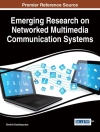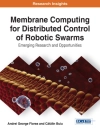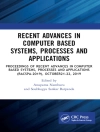Driven by the desire to boost the quality of service of wireless
systems closer to that afforded by wireline systems, space-time
processing for multiple-input multiple-output (MIMO) wireless
communications research has drawn remarkable interest in recent
years. Exciting theoretical advances have been complemented by
rapid transition of research results to industry products and
services, thus creating a vibrant new area.
Space-time processing is a broad area, owing in part to the
underlying convergence of information theory, communications and
signal processing research that brought it to fruition. This book
presents a balanced and timely introduction to space-time
processing for MIMO communications, including highlights of
emerging trends, such as spatial multiplexing and joint transceiver
optimization.
* Includes detailed coverage of wireless channel sounding,
modelling, characterization and model validation.
* Provides state-of-the-art research results on space-time
coding, including comprehensive tutorial coverage of orthogonal
space-time block codes.
* Discusses important recent developments in spatial
multiplexing, transmit beam-forming, pre-coding and joint
transceiver design for the multi-user MIMO downlink using full or
partial CSI.
* Illustrates all theory with numerous examples gleaned from
cutting-edge research from around the globe.
This valuable resource will appeal to engineers, developers and
consultants involved in the design and implementation of space-time
processing for MIMO communications. Its accessible format, amply
illustrated with real world case studies, contains relevant,
detailed advice for postgraduate students and researchers
specializing in this field.
Jadual kandungan
List of Contributors.Preface.Acknowledgements.1 MIMO Wireless Channel Modeling and Experimental Characterization (Michael A. Jensen and Jon W. Wallace).1.1 Introduction.1.2 MIMO Channel Measurement.1.3 MIMO Channel Models.1.4 The Impact of Antennas on MIMO Performance.References.2 Multidimensional Harmonic Retrieval with Applications in MIMO Wireless Channel Sounding (Xiangqian Liu, Nikos D. Sidiropoulos, and Tao Jiang).2.1 Introduction.2.2 Harmonic Retrieval Data Model.2.3 Identifiability of Multidimensional Harmonic Retrieval.2.4 Multidimensional Harmonic Retrieval Algorithms.2.5 Numerical Examples.2.6 Multidimensional Harmonic Retrieval for MIMO Channel Estimation.2.7 Concluding Remarks.References.3 Certain Computations Involving Complex Gaussian Matrices with Applications to the Performance Analysis of MIMO Systems (Ming Kang, Lin Yang, and Mohamed-Slim Alouini).3.1 Introduction.3.2 Performance Measures of Multiple Antenna Systems.3.3 Some Mathematical Preliminaries.3.4 General Calculations with MIMO Applications.3.5 Summary.References.4 Recent Advances in Orthogonal Space-Time Block Coding (Mohammad Gharavi-Alkhansari, Alex B. Gershman, and Shahram Shahbazpanahi).4.1 Introduction.4.2 Notations and Acronyms.4.3 Mathematical Preliminaries.4.4 MIMO System Model and OSTBC Background.84.5 Constellation Space Invariance and Equivalent Array-Processing-Type MIMO Model.4.6 Coherent ML Decoding.4.7 Exact Symbol Error Probability Analysis of Coherent ML Decoder.4.8 Optimality Properties of OSTBCs.4.9 Blind Decoding of OSTBCs.4.10 Multiaccess MIMO Receivers for OSTBCs.4.11 Conclusions.References.5 Trace-Orthogonal Full Diversity Cyclotomic Space-Time Codes (Jian-Kang Zhang, Jing Liu, and Kon Max Wong).5.1 Introduction.5.2 Channel Model with Linear Dispersion Codes.5.3 Good Structures for LD Codes: Trace Orthogonality.5.4 Trace-orthogonal LD Codes.5.5 Construction of Trace Orthogonal LD Codes.5.6 Design of Full Diversity LD Codes.5.7 Design of Full Diversity Linear Space-time Block Codes for N .5.8 Design Examples and Simulations.5.9 Conclusion.References.6 Linear and Dirty-Paper Techniques for the Multiuser MIMO Downlink (Christian B. Peel, Quentin H. Spencer, A. Lee Swindlehurst, Martin Haardt, and Bertrand M. Hochwald).6.1 Introduction.6.2 Background and Notation.6.3 Single Antenna Receivers.6.4 Multiple Antenna Receivers.6.5 Open Problems.6.6 Summary.References.7 Antenna Subset Selection in MIMO Communication Systems (Alexei Gorokhov, Dhananjay A. Gore, and Arogyaswami J. Paulraj).7.1 Introduction.7.2 SIMO/MISO Selection.7.3 MIMO Selection.7.4 Diversity and Multiplexing with MIMO Antenna Selection.7.5 Receive Antenna Selection Algorithms.7.6 Antenna Selection in MIMO Wireless LAN Systems.7.7 Summary.References.8 Convex Optimization Theory Applied to Joint Transmitter-Receiver Design in MIMO Channels (Daniel P´erez Palomar, Antonio Pascual-Iserte, John M. Cioffi, and Miguel Angel Lagunas).8.1 Introduction.8.2 Convex Optimization Theory.8.3 System Model and Preliminaries.8.4 Beamforming Design for MIMO Channels: A Convex Optimization Approach.8.5 An Application to Robust Transmitter Design in MIMO Channels.8.6 Summary.References.9 MIMO Communications with Partial Channel State Information (Shengli Zhou and Georgios B. Giannakis).9.1 Introduction.9.2 Partial CSI Models.9.3 Capacity-Optimal Designs.9.4 Error Performance Oriented Designs.9.5 Adaptive Modulation with Partial CSI.9.6 Conclusions.Appendix.References.Index.
Mengenai Pengarang
Since 2002, Professor Alex Gershman has worked in the Dept of Electrical & Computer Engineering at Mc Master University in Canada but is currently on research leave as a Guest Professor and Head of the Smart Antenna Research team (Sm ART) at the Dept of Communication Systems, University of Duisburg-Essen, Germany. With 20 years experience in the field gained in Russia, Switzerland, Germany and Canada, Professor Gershman has participated in numerous technical committees and has been an invited speaker at more than 20 events. He is a Senior Member of the IEEE and since 1999 has been the Associate Editor of IEEE Transactions on Signal Processing.
Professor Nikos Sidiropoulos currently works in both the Telecommunications Division, Dept of Electronic & Computer Engineering, University of Crete, Greece and as an Adjunct Professor at the Dept of Electrical & Computer Engineering & Digital Technology Center, University of Minnesota, USA. After completing his Diploma in Electrical Engineering in Greece he obtained his M.S. and Ph.D. in Electrical Engineering from the University of Maryland, USA. With 15 years experience in the area he has industry experience from G-Systems Ltd, Athens and as a consultant for Globespan Inc. USA.












